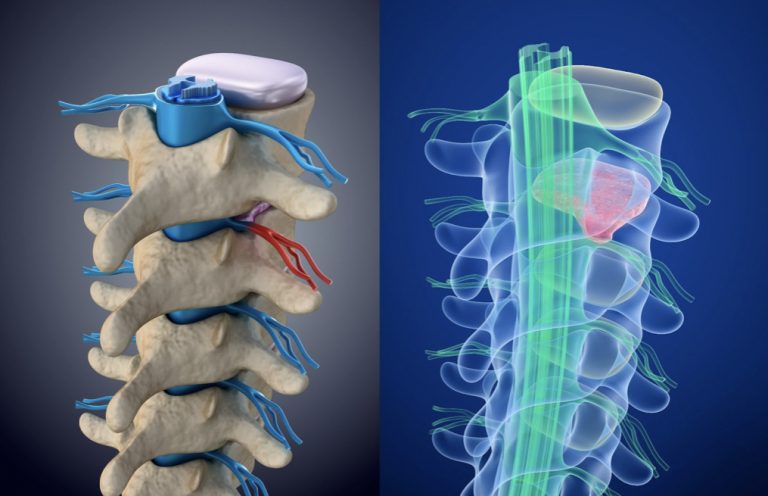Chronic neck and back pain affects millions of people each year. Causes range from minor muscle strains to catastrophic injuries to age-related degeneration. Conditions that affect the spinal discs are a frequent source of pain due to the tremendous dress we place on them, combined with the proximity to spinal nerves.
While many people are likely to have heard of bulging or herniated discs, disc extrusion is another disc condition that can develop. If you have been diagnosed with a disc extrusion as the source of your symptoms, ranging from back pain to leg pain, we want to help you better understand this condition and your treatment options.
Although chronic symptoms caused by disc extrusion can interfere with your productivity and ability to enjoy basic activities, it is possible to find relief through effective therapies. If you are interested in learning more about the options available to you through BEST Health System, continue reading.
What is a Disc Extrusion?
A disc extrusion is a form of a herniated disc. Disc herniation occurs when the soft inner material of a spinal disc, or nucleus pulposus, begins to push out through a weak point or tear in the tough outer layer, or annulus fibrosus. The term disc extrusion is more commonly used by radiologists and less by diagnosing physicians and patients, but specifically refers to a disc herniation where the top of the herniated nucleus pulposus is wider than the neck.
A disc extrusion does not necessarily cause symptoms on its own, with pain typically being the result of compression or irritation of surrounding spinal nerves. If this occur, common symptoms include:
- Localized pain in the neck or back, depending on the location of the disc extrusion
- Radiating pain, including leg pain
- Tingling and numbness
- Muscle weakness and muscle spasms
Upon diagnosis of disc herniation or disc extrusion as the source of symptoms, the first step in treatment is usually a course of conservative, or nonsurgical therapies.
Conservative Disc Extrusion Treatment Options
A large number of people diagnosed with disc extrusion find meaningful relief through conservative treatments combined with a healthy lifestyle. The most effective options vary from patient to patient, which is why it’s important to find a provider who can deliver personalized care. Common treatments include:
- Periods of rest to take pressure off the affected disc
- Use of over-the-counter medication to relieve localized pain or leg pain
- Alternating hot and cold compression therapy to relax soft tissue and reduce inflammation
- Physical therapy to strengthen supporting muscles and improve range of motion
- Posture improvement to evenly distribute pressure on the spine
- Weight management if necessary to relieve pressure on the disc
- Nutritional counseling and adopting a nutrient-rich anti inflammatory diet
Patients should take a proactive approach and take the time to develop an effective conservative treatment plan. It can take some trial and error to find the right combination of therapies. Surgery should be seen as a last-resort treatment, but if weeks or months go by without experiencing significant results, it can represent the best chance of achieving long-term pain relief.
Surgical Approaches to Disc Extrusion Treatment
A common surgical procedure to treat disc extrusion is a discectomy. In a discectomy, the surgeon will access the spine through an incision to remove the extruded nucleus pulposus material that is affecting spinal nerves. The surgeon will then close the incision and the patient will begin the recovery process.
Traditional approaches to discectomy require a large incision, significant disruption of soft tissue and a long, potentially difficult, recovery period. The overnight hospitalization could increase the risk of exposure to infection as well as other complications.
Today, discectomy for disc extrusion can be performed on an outpatient basis using minimally invasive techniques. By combining microsurgical technology and direct visualization equipment, surgeons can access the spine with a much smaller incision and less soft tissue disruption. This allows for an outpatient procedure at an ambulatory surgery, where patients can be up and walking within hours of undergoing the procedure. BEST Health System is paving the path for minimally invasive spine procedures as they are modernizing traditional medical approaches to make it more manageable for the patient.
Reach out to BEST Health System
If you are interested in learning more about BEST Health System and the spine procedures available, contact our team today. Our dedicated team members are committed to providing patients with the most effective, least invasive treatment. Contact BEST Health System and get started today. The BEST is yet to come.
